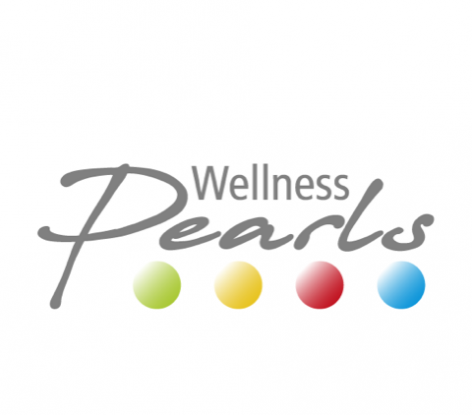Wellness dictionary
Little ABC for your spa-break questions ...
In their treatment discriptions, wellness hotels often use technical terms, which are hard to understand for potential guests. We have therefore collected and defined the most relevant terms in our small wellness ABC. A tip: Our wellness dictionary also supports word requests. You don't need to know the exact wording.
Select letters or search term:
Bach Flower Remedies
Bach Flower Therapy
Alternative naturopathic treatment to remedy mental imbalance
The original Bach Flower Therapy was founded by the English immunologist, alternative practitioner and philosopher Dr. Edward Bach (1886 - 1936). It is intended to serve as an alternative naturopathic treatment for the "reharmonization of disharmonious states of mind". Bach researched and defined thirty-eight disharmonious states of the soul in human nature, which become the trigger for mental and physical illnesses or prevent their healing. The Bach Flower Remedies are therefore not directed against a specific disease, but are intended to correct the mental imbalance underlying the disease.
How does a Bach Flower remedy work?
The Bach flower concentrates are thirty-eight specially prepared flower extracts from wild plants and trees, which are taken in individually composed Bach flower mixtures. The choice of flowers is made in consultation with a trained Bach Flower Therapist. This includes doctors, dentists, alternative practitioners and physiotherapists.
In Germany, Bach Flower remedies are regarded as medicines. However, as they are not approved as such, they cannot be kept in stock in pharmacies without further ado. They can, however, be imported by pharmacies from another EU country, e.g. England, in a quantity to meet personal needs.
Implementation of Bach Flower remedies
In the application of Bach Flower Therapy, a distinction is made between three different levels of application:
- mental health care, such as the desire to develop consciousness or harmonise disharmonic mental behaviour patterns such as jealousy, anxiety or resignation.
- the acute treatment of psychological stress situations and life crises, e.g. midlife crisis, job loss or school problems. This is where Bach Flower Therapy is used to complement psychotherapeutic measures.
- Bach Flower therapy can also be helpful as a complementary treatment for acute and chronic illnesses (in addition to specific treatments by a doctor or alternative practitioner). It has proved particularly effective for complaints with psychovegetative symptoms, such as sleep disorders or neurodermatitis.
The Bach Flower Remedies can therefore be used to prevent physical illness and to support professional medical or psychological treatment, but they cannot replace it under any circumstances.
The selection of Bach Flowers
Before the treatment with Bach Flowers, it is important to define the ones that suit your own needs. For this purpose, those to be treated can take part in a test that shows which Bach Flowers make sense for the symptoms. In addition to the test, intuitive selection procedures play a role. Up to four vials are taken directly from the range of Bach Flowers. In the final selection, the results from the text and the spontaneous selection are combined. Then the person to be treated consciously decides which six Bach Flowers he or she would like to work with in the next few weeks. Finally, the patient selects a power formula for the Bach Flower mixture, which can be changed again and again during the course of the treatment. In the best case, this formula should be pronounced out loud again and again during the intake.
Which Bach Flowers are there?
According to Bach, in addition to human characteristics, representatives with similar properties can be found in the plant world. Thus, with the help of Bach flower therapy, the human energy field can be supported and superimposed on the harmonious vibrations of the Bach flowers. By taking Bach Flowers, people should change their thinking in a positive way. Among the 38 Bach Flowers are
- Common agrimony
- Aspen / Trembling Poplar
- copper beech
- Centaury
- Lead Root
- cherry plum
- Horse Chestnut Bud
- Chicory
- Common clematis
- Wood apple
- English Elm
- Autumn Gentian
- Gorse
- Scottish heather
- European holly
- Honeysuckle
- Hornbeam
- Glandular balsam
- European larch
- Spotted Juggler Flower
- Field Mustard
- Oak
- Olive tree
- Scottish pine
- Red chestnut
- Yellow Sunflower
- Rock spring water
- one-year-old ball
- Cold star of milk
- Chestnut / Sweet Chestnut
- Vervain
- Vine
- Walnut
- Waterspring
- White flowering horse chestnut
- Wood Trumpet
- Hedge Rose
- Yellow willow
For whom is Bach Flower therapy suitable?
Dr. Edward Bach divided into seven groups for which his Bach Flower remedies are particularly suitable. These are as follows:
- People with anxiety states
- Insecure people
- Lonely people
- People with no interest in what is happening around them
- Overly concerned about other people
- Despondent and desperate people
- People who are hypersensitive to external influences
Bach flower therapy - how to take and for how long?
The Bach Flowers are traditionally available as concentrates and are taken undiluted. Traditionally, two drops of the concentrate of the chosen Bach Flower remedy are placed in a glass and then drunk throughout the day. Another application variant is the preparation of the Bach Flower mixture in an intake bottle. This is then topped up with still mineral water. In this variant, four drops are usually given directly onto the tongue four times a day.
For acute imbalances, an intake period of one to four days makes sense, while the recommended intake period for longer problem situations should be at least eleven days, but generally around 21 days. After this time, a check is made to see whether the current composition of the Bach Flowers still meets the needs of the person treating the patient. This procedure is repeated according to requirements.
The effect of Bach Flower remedies has not been scientifically proven.
Related topics: Phytotherapy

